SEMA News—December 2018
BUSINESS
Trends and Challenges for 2019
SEMA’s Council and Network Leaders Discuss the Future of Their Marketplaces
SEMA’s council and network leaders gathered at the 2018 SEMA Installation & Gala in Universal City, California, on July 20. |
SEMA News spoke with SEMA’s council and network leaders to find out what’s in store for the coming year, and to get their thoughts about the emerging trends and the challenges they can expect to face based on what their organizations are seeing in their respective marketplaces. Common themes included the responsibility to fight overly restrictive government regulations, continued concern regarding the Recognizing the Protection of Motorsports (RPM) Act, and the evolution of in-vehicle technologies, such as advanced driver assistance systems (ADAS).
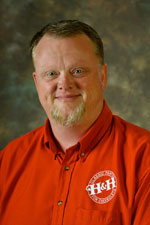 |
Automotive Restoration Market Organization Chair: Tray Smith, H&H Classic Parts
Over the course of the last couple of years, the Automotive Restoration Market Organization (ARMO) has seen a changing of the guard. Many smaller companies have been bought up for market share and have disappeared. We are also seeing older owners and companies that are either being taken over by the next generation or closing down. Right now, it’s all about trying to hang on to your share of the market. Retailers have to show best price, best service and, of course, what makes them special compared to the competition. What value do you have that is better than the other guy? Manufacturers have to show price but also make a better product than their competitors.
Currently, ARMO is looking to expand our “Take a Kid to a Car Show” program. We’re evaluating several new programs under that umbrella that we will launch in 2019. We’re also working on a joint program with the Hot Rod Industry Alliance about educating school counselors and teachers regarding available opportunities for high-school, college and trade-school graduates and how to guide them into the industry.
There is a misconception that restoration and hot rods are all about building cars. Although that is the end result of everything we do, manufacturers and retailers also need engineers, designers, accountants, graphic artists, sales people and machinists to get to that point. This industry has a number of career paths for someone just starting out. We are also continuing to promote the new and exciting products that are being displayed at the Hot Products Showcase each year in Carlisle, Pennsylvania.
We will always have concourse restorations. They are what got this industry started and will continue to play a large role; however, we are seeing more restomods and full-on street-machine builds. As the original-equipment manufacturers (OEMs) continue to improve what they are putting out, people will want to apply those new technologies and ideas to their classic cars and hot rods. The envelope keeps being pushed a little further each year on what we can put inside a ’69 Camaro, ’67 Mustang or ’57 Chevy.
The changes in the sales-tax laws after the Supreme Court reversed its decision on Quill vs. North Dakota are going to be a challenge for our industry—especially small retailers. Finding qualified employees also continues to be difficult, which is a major reason we have launched the counselor outreach program. In addition, the Prop. 65 mandates coming down in California continue to be a challenge for everyone. As an industry, it is our responsibility to educate ourselves on all government regulations and fight bad ones as they come down the pipe.
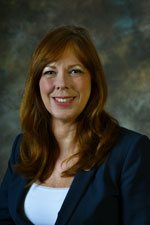 |
Emerging Trends & Technology Network Chair: Marla Moore, Coker Tire
The Emerging Trends and Technology Network (ETTN) offers several educational opportunities for members—including tech seminars, The ETTN Vehicle Tech Lunch and Learn, and annual tech roundtable discussions that are designed to present relevant information to engineers and technical professionals to help them succeed.
The SEMA Board of Directors has given us the opportunity to pursue a research effort to determine a sustainable pathway to engage and recruit engineers involved in student engineering competition teams. More than 300 universities across the United States participate in student engineering automotive competitions. Those students are passionate about building and racing vehicles; they are hands-on, entrepreneurial and already versed in the latest technology.
We want to raise awareness of the specialty-equipment market among team engineers so that they will want to pursue careers in the aftermarket once their studies have concluded.
We are excited about the progress of the first cross-council tech subcommittee powered by the ETTN and led by Rob Simons at Edelbrock. This subcommittee includes many of our industry’s technical leaders, representing all councils with the sole initiative of identifying the most impactful, immediate aftermarket trends, challenges and opportunities in the areas of vehicle technology, product development and manufacturing. The subcommittee works closely with SEMA Vice President of Vehicle Technology John Waraniak and the SEMA Garage to advise them on member needs and as a resource for real-world solutions. This focused leadership has already addressed the need for a 3-D metal printer, an aftermarket tech transfer beta program, and researched the possibility of a supplier database to benefit our members.
The technical landscape of our industry is changing quickly. Our top concerns include the challenges presented by ADAS, new California Air Resources Board (CARB) emissions requirements and the OEMs’ electronic control unit (ECU) advanced encryption. We are working to educate our members to help prepare them for the challenges in front of us. SEMA is looking at ways to guide and support our industry while addressing the impact of ADAS on member parts integrating with the OE systems. There is an ongoing series of tech articles addressing ADAS and an ADAS vehicle equipment list by make and model posted on the SEMA Garage website (www.semagarage.com/services/vehicleadas). ETTN has also developed a Design Validation Resource Guide
(www.semagarage.com/ettnresourceguide) designed to help manufacturers connect with companies capable of testing and validating products or software.
Another immediate concern is CARB’s introduction of new evaporative emissions control system testing and requirements, which will present compliance issues for many SEMA-member companies. CARB and the Environmental Protection Agency regulate two types of emissions: tailpipe and evaporative. Historically, most engine-related performance products have required only tailpipe testing for their evaluation in obtaining a CARB executive order; however, some other products that affect fuel containment or delivery systems have at times been required to undergo evaporative testing. It is preferred to avoid evaporative testing for engine-related performance products because of the cost and unpredictability. SEMA is working with CARB to find a reasonable path to compliance.
A near-future concern involves access to ECU calibrations. As vehicles become more complex, safety and security codes are entangled in the systems and performance calibrations. Current vehicles have 50 million lines of code, and connected vehicles have 100 million lines of code. Within every 1,800–2,000 lines, there is likely a bug in the code. Five thousand bugs are typical in an automotive ECU, which presents 5,000 cyber security issues that a vehicle can face.
Understandably, the OEMs are concerned about allowing access. ETTN select committee member Robert Vogt, CTO at Voyomotive, is working with Waraniak to explore possible opportunities, while the SEMA Board of Directors is addressing those concerns at a higher level. The good news is that we are an industry of innovative entrepreneurs, and with new challenges will come new opportunities.
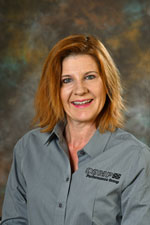 |
Hot Rod Industry Alliance Chair: Tammy Holland, COMP Cams
The Hot Rod Industry Alliance (HRIA) is currently working on our youth initiative, Education Days, and engaging our members on legislative issues. We recently attended the American School Counselor Association trade show, where we informed the younger generation about everything the automotive aftermarket has to offer. Three years ago, we moved Educations Days to the National Street Rod Association Louisville Nationals, opening it up to everyone, and the event has grown ever since under the guidance of Joe Petlick with Motor State Distributing. That is a great opportunity for everyone to learn from the experts for free. At each HRIA open meeting, we cover the most current legislative issues.
We are starting to see more ’70s and ’80s models coming out. Traditional hot rods are becoming harder and more expensive to find, whereas the ’70s and ’80s cars and trucks are still cool and have fantastic, clean lines. The younger generation is embracing those aspects and taking advantage of the availability and cost to get into the hot-rod market.
Prop. 65 has hit home with HRIA. SEMA wrote a great article (www.sema.org/prop65), and we encourage our members to get to know the law because it affects everyone in our industry. In addition, the RPM Act and tariffs continue to pose a challenge to our industry. Our members are constantly asking us about these legislative items. We are thankful for SEMA’s Washington, D.C., staff in helping us relay messages to our members.
 |
Truck and Off-Road Alliance Chair: Kathryn Reinhardt, MagnaFlow
The Truck and Off-Road Alliance (TORA) is focused on providing each member company with benefits, including the Jeep report, the media preview event, awards for best new products, and open meetings for truck-specific contributors. We are listening to the marketplace and making sure that we are connecting with the off-road, accessories and powersports communities.
Online commerce is rapidly growing. Consumers are doing more research, and they want to receive aftermarket parts faster and for them to fit perfectly. Many manufacturers are looking into selling-direct opportunities and ways to connect with consumers. Retailers should use their local marketing efforts to capture data on consumers and show off their services, shops and installation abilities.
Jeeps are the latest trend in our aftermarket segment. The JK and JL edition Jeeps have allowed manufacturers to create new product lines and new business that the aftermarket has never had before. We have seen new manufacturers and new distribution formed in order to participate in that trend.
 |
Manufacturers Representative Network Chair: Nathan Kunzman, Kunzman & Associates
The Manufacturers Representative Network (MRN) continues to bring reps and manufacturers together to create more business opportunities. We have helped forge mutually beneficial business relationships through our RepMatch program and now will expand it to help facilitate meetings between rep agencies and manufacturers looking to hire sales teams. Our goal as a network is to help drive business and put dollars into our members’ pockets.
From a sales standpoint, we continue to see the aftermarket expand and offer more unique products. Traditional segments such as truck, Jeep or off-road and street performance are growing. End users are more in tune with what they want, and it’s our job to ensure that our customers have all of the necessary tools and information to stay current with the trends.
Perhaps the longest-running challenge that leads to many concerns within the rep community is the growing trend of mergers and acquisitions. Unfortunately, there are times when companies are bought and sold and our member agencies are cut out without any opportunity to prove what they have done and continue to do on a daily basis to grow the business that was just acquired.
As sales reps, we need to be open and willing to make the changes that are important to stay relevant. We are constantly looking at ideas to better our community and bring value to rep agencies.
 |
Motorsports Parts Manufacturers Council Chair: Jason Bruce, Holley
The performance racing market is strong because there are more places and more variety of grassroots to professional-level racing events in which to participate. With the economy doing well, racers are investing in their vehicles, teams and equipment.
With this growth come some interesting challenges and complications. Historically, the majority of the racing market was divided between drag racing and circle track. Now there are many other forms of racing niches, including “no prep” and “small tire” drag racing, autocross, off-road, SXS, drifting and time trials that allow the racer to choose between a variety of disciplines that fit his/her budget. That provides complexity in the type of products that our member manufacturers design and build, and it gives us an opportunity to offer our members exciting new product ideas to further service their passions.
One of the biggest concerns regarding the performance racing side of the industry is continued overreach by state and federal government agencies. The actions that SEMA has taken with the RPM Act are important subjects that the Motorsports Parts Manufacturers Council (MPMC) and our members have attached ourselves to and support fully. That situation is far from over, and we need to continue to help build awareness of this issue and support the RPM Act.
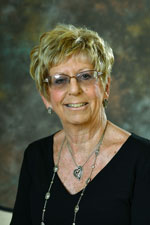 |
Professional Restylers Organization Chair: Ellen McCoy, EMK Marketing
For the past few years, the auto industry has experienced an extraordinary run of record-setting new-vehicle sales. In the restyling industry, strong vehicle sales equate to good business, because our primary sales channel is through automotive dealerships. As long as dealers are selling a lot of SUVs and pickups, restylers and manufacturers will thrive.
However, there are signs that vehicle sales may be slowing somewhat, and it’s unlikely that the market will be able to sustain record sales indefinitely. While there’s no indication of a dramatic slowdown, it’s still important for companies to keep their eye on the ball and be prepared to adjust for any swings in the marketplace.
As a council, the Professional Restylers Organization (PRO) has always tried to identify members’ needs and then come up with projects or programs that fill a gap. For example, to help restylers and retailers who sell to car dealers improve their business practices, the council developed the PRO Sales Training Manual: A Restyler’s Guide to Selling Dealer-Direct. As the next step, PRO plans to release a sales professional certificate test during the fourth quarter of this year. The knowledge-based test is centered on the training manual.
SUV and pickup sales now eclipse car sales by a substantial margin. That has proven to be quite beneficial. Truck gear sells, and as long as that trend continues, the accessory market will do well. Other core products include sunroofs and leather interiors, along with paint-protection film and, for some, vehicle wraps. Mobile electronics is another significant trend. Those products—especially those that are safety-related—have become a mainstay category for many restylers, and aftermarket manufacturers are offering a range of products. And while many high-tech features are now standard or optional equipment on many new vehicles, there are still opportunities to add aftermarket versions to some new vehicles and retrofit late-model vehicles lacking those types of equipment.
There’s no question that technology tops the list of challenges in our market. The automotive landscape and vehicle architecture are evolving at lightning speed, with the OEMs onboarding new technologies such as lidar, ADAS, sensors, complex wiring and so on. Those scenarios present some unique challenges for the restyling segment, because our industry’s primary sales channel is through automotive dealerships where new technologies on new vehicles first come into play. For manufacturers, that means learning about new-vehicle architecture, how it affects the products they make (or vice versa) and what they need to do to adapt. Restylers must also learn about those new technologies, how the products they install may impact a vehicle system or sensor, train and educate their technicians/installers, and work with suppliers that have done their due diligence.
 |
SEMA Businesswomen’s Network Chair: Erin Gilhuly, Toyota Motor North America
Women make up 50% of the new-car market, which creates a huge aftermarket sales opportunity. Manufacturers and retailers should look for ways to tap into that market with products and services that provide solutions and tangible value.
With all that has been reported in the news lately regarding harassment and hostile work environments, the SEMA Businesswomen’s Network (SBN) would like to see industry companies, regardless of size, create safe and comfortable environments for all employees. To help with that effort, the SBN, along with SEMA human resources and legal, are working on a series of education modules that will help both managers and team members create inclusive, high-producing teams.
 |
Wheel & Tire Council Chair: Greg Parker, Wegmann Automotive USA Inc.
The SEMA Wheel & Tire Council (WTC) was one of the founding councils of the new Cross-Council Technology Task Force that is now led by ETTN. The task force analyzes future technology and its impact on individual industry segments to find out if there are common challenges that can be addressed as a unified body.
Brand-new vehicles are becoming high-tech computers that are on the road. Due to the technological advancements of ADAS, modifying a new vehicle—especially with new wheels and tires—becomes more of a challenge than it used to be. Altering the ride height, stance or driving characteristics of a new vehicle can also change the geometry of safety camera systems and other driver-assist systems, which are vital to how a new vehicle operates while driving. Wheel and tire manufacturers must come together to share their research and test those alterations to ensure that their products are compliant and safe for end consumers. Retailers must ensure that they have up-to-date knowledge and training capabilities to correctly realign required safety systems on vehicles that enter their shops.
One trend we are seeing is larger wheels and lower-profile tires taking over the market. As the SUV and truck markets continue to grow, those vehicles require larger wheels, and consumers want to go even larger than the original OE package when upgrading. With tires, the reverse seems to be true. Consumers want tighter and lower-profile tires due to the sleeker and high-performance appearance.
The devaluation of vehicles as a whole within the younger generation has been a challenge for us. In the 21st century, young adults can use social media on their cell phones to connect with friends and family. If they need to go somewhere, they can simply rideshare using Uber or Lyft. Previous generations needed vehicles of their own in order to have those same interactions. With a high level of vehicle ownership comes increased customization. Wheel and tire packages are typically one of the first modifications new-vehicle owners make; however, as the need for personalized transportation devalues, it also shrinks the available market for vehicle customization.
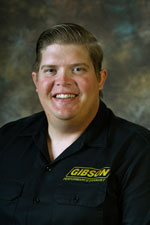 |
Young Executives Network Chair: Rory Connell, Advanced Accessory Concepts LLC
Truck and SUV accessories will continue to dominate the specialty-equipment market. With new additions, such as the Jeep JL and Ranger hitting the market this year and the Bronco coming shortly, consumers have more options than ever before. Retailers should focus on what products they can sell and install for those consumers. Additionally, camping and outdoor segments are growing as more people make an effort to disconnect from technology. Keep an eye on rooftop tents, cargo racks and accessories that people typically buy at sporting-goods stores.
The Young Executives Network (YEN) is creating and executing innovative new programs and watching others follow suit. For instance, live chats and social media are now being utilized by other councils, including PRO. It’s even more rewarding for us to put a strategic focus on a category, such as UTVs and powersports, and watch TORA grow further upon it.
As a network, we must take a hard look at emerging technologies, such as electric vehicles and ADAS. What are retailers going to sell when vehicles no longer need camshafts and carburetors or maybe even steering wheels? It’s a tough but honest question that should not be ignored. We live in a world where innovation is rapid, and if you run a company and you’re not prepared to adopt that mentality, you should prepare for failure.
SEMA councils and networks offer members a variety of niche-specific programs and activities designed to provide educational and networking opportunities while promoting their particular market segment. For more information, visit www.sema.org/councils.






